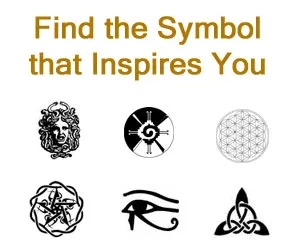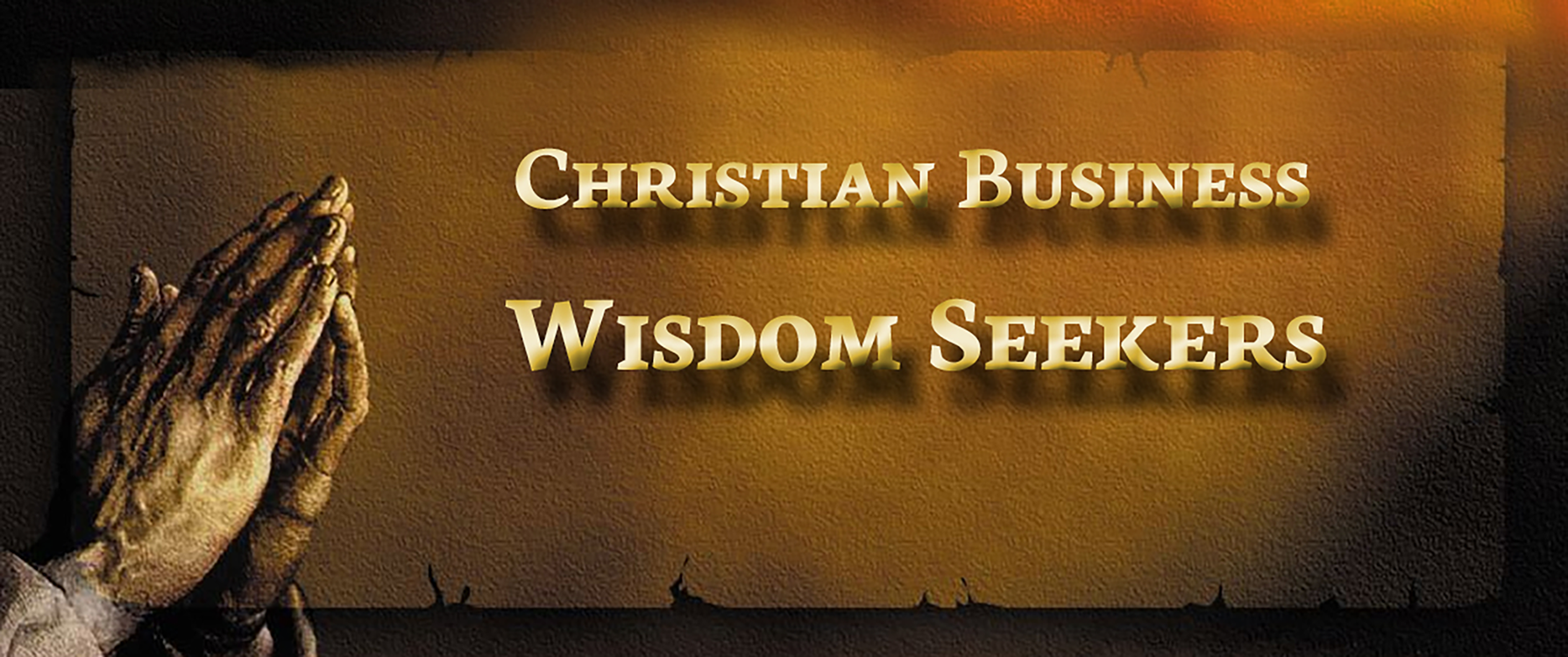Are You Using Symbols Effectively?

Are You Using Symbols Effectively?
Rabbi Evan Moffic wrote, “The Israelites that left Egypt were made up of 12 tribes. Each tribe had a unique culture and identity. Moses had to figure out ways to unify them.
One of the most effective strategies was using symbols. The Ark of the Covenant was the most memorable and powerful.
Just as the American flag unifies 50 states, the portable ark connected the twelve tribes. It brought God into their midst, and it brought them, as one people, into God’s midst. It stood, literally and figuratively, at the center of their community.
What symbols bring you and your co-workers together? What strategies do you use to overcome natural differences?”
Dan Brown, the famed author, wrote three blockbuster books which were turned into movies – based on symbols.

According to the Merriam Webster dictionary, symbology is a noun that describes, the art of expression by symbols, the study or interpretation of symbols, and a system of symbols. Religions, governments, cults, movements have all relied on symbols and the meanings those symbols hold to move understanding and ideas forward. As Literary Devices shared, “They (symbols) give deeper meaning to abstract notions.” Bible Gateways shows us that there are over 1670 symbols in the Bible. You can just imagine how many there are in the world, used by many groups and organizations, right down to the Nike swoosh?
B+C Brandculture believes that “Symbols act as a visual shorthand to allow external audiences to identify brands. But they are even more important to employees and those with more intimate connections to a brand because they can convey and connote so much more meaning.” They go on to say that effective symbols provide an instant reminder of what they stand for, their shared experiences, and I would add – look forward to. They use the example of SouthWest Airline and how their Pre-Flight Speech allows for improvisation and fun, the employees adopt “Living the Southwest Way” and have a warrior spirit and their generous spirit.
Author and Business Coach Scott Jeffrey penned it elegantly when he wrote, “Ultimately, human beings—your team, your stakeholders, and your customers—are not moved, persuaded, or influenced by thoughts and words. We are moved by feelings, emotions, and images. We are moved by symbols.”
In short effective symbols build and define culture, incorporate brand, and motivate everyone. They are promoted through stories and with time will be layered with meaning and values.
Symbols take on the physical in logo, name tags, motivational rewards such as employee of the month, style of dress, perks for employees and customers, and any variety of ways you can bond employees and customers to your company.

What will and can symbols do:
- Understanding
- Motivation
- Give meaning to what people do (medals, awards, plaques)
- Show that employees and customers are respected and appreciated
- Move people
“The best leaders at every level, are master users of stories and symbols.” - Tom Peters
How do you create symbols that have meaning? Oscar Trimboli says it best when he penned the following:
5 tips to creating powerful symbols in your workplace
- Simple – The symbol doesn’t need to be explained.
- Memorable – The symbol cuts through and creates long-lasting imagery in the minds of others.
- Integrated – Your symbols are aligned and assimilated into your mission, vision, values, strategies, and daily activities. In Rosabeth Moss Kanter's article, Three Things that Actually Motivate Employees she discusses the importance of integration to a higher purpose for each employee.
- Consistent – Your symbols are communicated regularly. Employees and leaders shouldn't need to prompt each other to remember the story or symbol.
- Decision making – If the symbol is real and meaningful, it is used during times of tough decision making, as a result, the symbol has impact and longevity.
Ideas that have been successful
- Having a scented work environment - “I need my team to bring all of their senses to work. I need them fully engaged in their work and with who they work with every day”
- Name tags – allows being more personal
- Provide comfortable spaces for employees to meet
- Write handbooks in a warm, friendly, and readable way
- Carefully select the colours for your company, workspace, or store
- Spend the extra time and money to develop the best logo and design elements for your company
- If you are the boss, give up your ivory tower and become one of the team members amongst your employees. Remove status symbols and privileges from the workplace

What were the greatest symbols found in the Bible?
- The Rainbow – God’s promise to never flood the world again and kill most of its inhabitants
- I have set my rainbow in the clouds, and it will be the sign of the covenant between me and the earth. Genesis 9:13
- The Fertile Ground - The fertility of the earth symbolizes the quality of life of those who inhabit it. The garden paradise of Adam and Eve represents the ideal abundant existence for humanity.
- A Lamp - A lamp, light, or burning candle is a symbol of the Holy Spirit’s role as Enlightener. The Holy Spirit is the source of our inspiration, insight, mental illumination, revelation, guidance, and direction.
- Bread – Being a staple in earliest agricultural societies it was considered a divine gift, one of charity, and sharing. The breaking of bread brought people together in unity and equality. We all need to eat. In Christianity, it symbolizes Christ’s body and God’s faithfulness, grace, and life itself.
- The Dove – The international symbol of peace. The dove was sent out after the flood and it returned to show we were saved. A dove descended upon Jesus when He was baptized, representing the Holy Spirit. There are so many meanings, purity, holiness, peace, devotion, beauty, innocence, the arrival of spring, and new life.
Symbolism has been in the world since its inception. It only makes sense that using it in your workplace and establishing your brand and culture would clearly communicate to the world who you are, what you stand for, and what your employees and customers can expect only to enhance you and your company. People instantly will recognize you and your message. It helps you to stand out, shapes your culture, defines your vision, and people are more likely to trust someone or some company who they immediately understand.

 |
Chuck Groot is an author, speaker, teacher. His love of God has spanned over 6 decades and he finds the more he studies the Bible, the less he knows, the more he succeeds the more dependant on God he becomes, and that there is nothing outside of loving God our Father, and being loved in return.
I would really like your opinions and thoughts, please share them in the comments section below. Also, if you liked the article please share it |
Bibliography
Anderson, N. (2016, December 5). The cultural symbols of an engaging workplace. Retrieved from McKnights: https://www.mcknights.com/marketplace/the-cultural-symbols-of-an-engaging-workplace/
Bread and Christianity. (2021, December 19). Retrieved from alimentarium: https://www.alimentarium.org/en/knowledge/bread-and-christianity
Charbonneau, M. (2019, February 15). Seven Examples of Symbolism in the Bible. Retrieved from media.ascnesionpress: https://media.ascensionpress.com/2019/02/15/seven-examples-of-symbolism-in-the-bible/
Culture Framework Part 6: Symbolism | Southwest Airlines’ Heart of Symbolism. (2021, December 19). Retrieved from brand culture: https://brandculture.com/insights/southwest-airlines-the-heart-of-symbolism/
Examples of Symbolism in the Bible. (2021, November 21). Retrieved from Literary Devices: https://literarydevices.net/examples-of-symbolism-in-the-bible/
Fairchild, M. (2021, March 6). Christian Symbols Illustrated Glossary. Retrieved from learnreligions: https://www.learnreligions.com/christianity-symbols-illustrated-glossary-4051292
Grantham, C. (2021, December 19). Symbols Of Meaning In The Modern Workplace. Retrieved from workdesign: https://www.workdesign.com/2016/06/symbols-meaning-modern-workplace/
Jeffrey, S. (2018, July 27). How Leaders Use Symbols to Influence Others. Retrieved from business2community: https://www.business2community.com/leadership/how-leaders-use-symbols-to-influence-others-02096894
Lazzari, Z. (2019, January 22). The Symbolic Approach in Corporate Culture. Retrieved from Small Business: https://smallbusiness.chron.com/benefits-leadership-programs-69072.html
Morree, P. d. (2018, December 18). Leaders: Give Up Your Status Symbols And Destroy The Ivory Tower. Retrieved from Corporate-rebels: https://corporate-rebels.com/status-symbols/
Schleckser, J. (2015, January 27). Using Stories and Symbols to Build a Powerful Culture. Retrieved from Inc: https://www.inc.com/jim-schleckser/use-stories-and-symbols-to-build-a-powerful-culture.html
symbology. (2021, November 21). Retrieved from Merriam Webster: https://www.merriam-webster.com/dictionary/symbology
Symbols. (2021, December 19). Retrieved from sparksnotes: https://www.sparknotes.com/lit/oldtestament/symbols/
The Wonderful Symbolism of Bread in the Bible. (2021, December 19). Retrieved from womanofnoble character: https://www.womanofnoblecharacter.com/bread-in-the-bible/
Tumino, M. (2021, December 19). What Does A Dove Symbolism? Retrieved from thinkaboutsuchthings: https://thinkaboutsuchthings.com/dove-symbolism/
WHAT ARE BIBLE SYMBOLS? (2021, December 19). Retrieved from biblesymbols: http://biblesymbol.com/what-are-bible-symbols/
What are the symbols of the Holy Spirit? (2021, December 19). Retrieved from Archdiacese of Saint Paul and Minneapolis: https://www.archspm.org/faith-and-discipleship/catholic-faith/what-are-the-symbols-of-the-holy-spirit/

